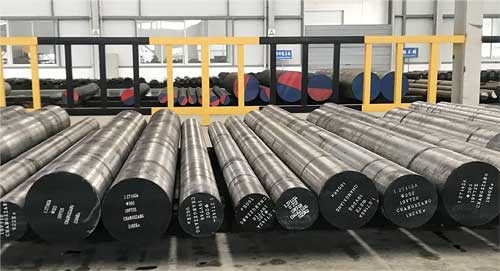In industries relying on precision tools and machinery, tool steel flat stock holds significant importance. It serves as the foundational material for crafting various tools due to its durability, toughness, and resistance to wear and tear.
Introduction to Tool Steel Flat Stock

What is Tool Steel Flat Stock?
Tool steel flat stock refers to a specific form of tool steel, shaped into flat bars or sheets, utilized in manufacturing tools for various industries like automotive, aerospace, and manufacturing. Its composition often includes elements like chromium, vanadium, and carbon, ensuring high strength and durability.
Importance and Applications
The significance of tool steel flat stock lies in its ability to withstand extreme conditions, making it ideal for cutting, shaping, and forming other materials. It finds application in producing dies, punches, cutting tools, and more.
Types of Tool Steel Flat Stock
There exist various grades of tool steel flat stock, each tailored for specific applications. Grades like A2, D2, and O1 offer distinct properties, from high wear resistance to better machinability. Understanding these grades assists in choosing the right material for the intended purpose.
Different Grades and Their Characteristics
- A2 Steel: Known for high wear resistance and excellent toughness.
- D2 Steel: Offers superior abrasion resistance and good machinability.
- O1 Steel: Known for its hardness and strength.
Comparison of Various Types
Comparing the different grades helps in determining the most cost-effective yet suitable option for specific tooling needs.
Factors Affecting Cost
Several factors influence the cost of tool steel flat stock, primarily centered around raw materials and manufacturing processes.
Raw Material Quality and Sourcing
The quality of raw materials significantly impacts the final cost. Opting for standardized materials and strategic sourcing helps mitigate expenses.
Manufacturing Processes and Techniques
The method of production, such as forging or casting, also affects the cost. Efficient manufacturing techniques contribute to lowering overall expenses.
Strategies to Lower Cost
While maintaining quality is crucial, there are strategies to acquire tool steel flat stock at a lower cost.
Efficient Purchasing Methods
Bulk purchasing or sourcing from reliable suppliers offering competitive prices aids in reducing costs.
Alternative Sourcing Options
Exploring alternative suppliers or considering recycled steel options can provide cost-effective alternatives without compromising quality.
Quality vs. Cost Balance
Balancing quality and cost is essential. While reducing expenses is crucial, compromising quality might result in tools that are less effective and durable.
Importance of Quality in Tool Steel
Emphasizing the significance of quality ensures long-lasting, efficient tools that yield better performance.
Finding the Right Balance
Seeking a middle ground where cost meets quality is key to making the most out of tool steel flat stock purchases.
Tips for Buying Tool Steel Flat Stock
Certain considerations should be kept in mind while purchasing tool steel flat stock to ensure cost-effectiveness without compromising on quality.
Considerations Before Purchasing
Checking certifications, understanding specific material requirements, and evaluating supplier credibility are crucial steps.
| Consideration | Description |
|---|---|
| Material Specifications | Detailed understanding of the required material specifications for the intended tooling use. |
| Grade Selection | Selection based on the specific properties needed, such as hardness, toughness, or wear resistance. |
| Quality Certification | Ensuring the supplier provides quality certifications verifying the material’s standards. |
| Supplier Credibility | Assessing the credibility of the supplier through industry reputation and customer reviews. |
| Cost Analysis | Conducting a thorough cost analysis to ensure competitive pricing without compromising quality. |
| Sourcing Options | Exploring multiple sourcing options, including primary suppliers, distributors, or recyclers. |
| Production Lead Times | Understanding lead times to align with project timelines and avoid delays in tool production. |
| Customization Possibilities | Assessing the supplier’s ability to provide customized sizes or finishes as per requirements. |
| Packaging and Shipping Terms | Reviewing packaging methods and shipping terms to ensure the safe and timely delivery of stock. |
| After-Sales Support | Availability of after-sales support, warranty, and assistance in case of material discrepancies. |
Trusted Suppliers and Resources
Relying on reputable suppliers and industry-specific resources ensures access to quality material at reasonable prices.
Case Studies: Cost Reduction Success
Real-world examples highlight successful cost-reduction strategies implemented by industries dealing with tool steel flat stock.
Strategies Implemented
Illustrating instances where efficient purchasing methods or alternative sourcing led to significant cost savings.
Future Trends in Tool Steel Flat Stock

The industry is witnessing continuous innovation, influencing both the quality and cost of tool steel flat stock.
Innovations Shaping the Industry
Advancements in material science and manufacturing techniques are likely to impact the cost dynamics of tool steel flat stock.
Cost Implications and Potential Savings
Analyzing how these advancements might drive down costs or provide more cost-effective alternatives.
Conclusion
Owning tool steel flat stock at a lower cost requires a balanced approach, considering quality, sourcing strategies, and industry trends. By understanding the grades, sourcing methods, and balancing quality with cost-effectiveness, industries can optimize their tooling expenses without compromising performance.
FAQs
Q: Can recycled steel be a reliable option for tool steel flat stock?
A: Yes, if sourced from reputable suppliers adhering to quality standards.
Q: How important is it to balance cost and quality in tool steel purchases?
A: It’s crucial for ensuring durable, efficient tools without overspending.
Q: What role does the grade of tool steel flat stock play in cost considerations?
A: Different grades have varying cost implications, influencing the overall expenses.
Q: Are there emerging technologies impacting the cost of tool steel flat stock?
A: Yes, advancements in manufacturing techniques may influence cost dynamics.
Q: How can industries assess the credibility of tool steel flat stock suppliers?
A: Certifications, industry reputation, and past performance are key indicators.

